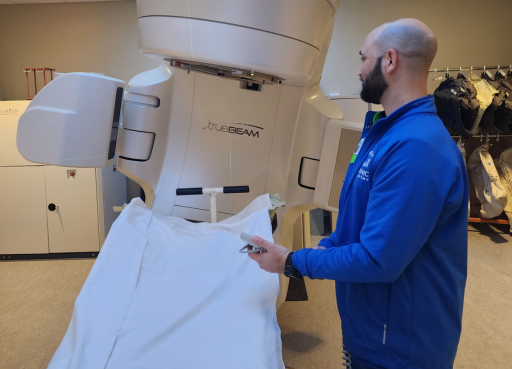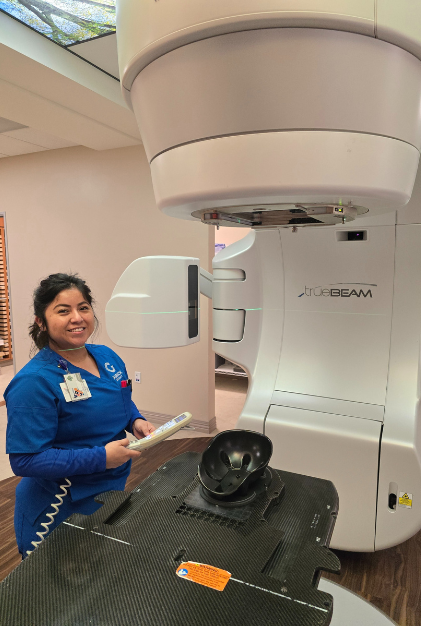- Concord Campus - (925) 687-9555
- Fresno Campus - (559) 222-1903
- Modesto Campus - (209) 521-1821
- Sacramento Campus - (916) 588-2060
- San Jose Campus - (408) 384-7050
- Van Nuys Campus - (747) 200-4567
- Concord Campus - (925) 687-9555
- Fresno Campus - (559) 222-1903
- Modesto Campus - (209) 521-1821
- Sacramento Campus - (916) 588-2060
- San Jose Campus - (408) 384-7050
- Van Nuys Campus - (747) 200-4567

- Los Angeles, CA
- Sacramento, CA
- San Diego, CA
- SF Bay Area, CA
- Welcome
- About the Program
- Program Description
- Goals and Objectives
- Program Delivery
- Length and Schedule
- Requirements
- Admissions Point System
- Career Services
- Program Outline
- Clinical Training
- Job Outlook and Salary
- Accreditation and Approval
- Certification
- Financial Aid
- FAQ
- Apply now
- External Resources
36 Months Program*
Online Didactic with On-Ground Clinical Areas
Job Placement Assistance
Veteran and Military Benefits
*135 Approved Instructional Weeks
| Student Tuition Recovery Fund (Non-Refundable) | $0.00 |
| Registration Fee (Non-Refundable) | $100.00 |
| Books (Non-Refundable, if accessed) | $725.00 |
| Tuition Fee | $77,738.00 |
|
TOTAL PROGRAM COST* *Program Fees are subject to change |
$78,563.00 |
| Student Tuition Recovery Fund (Non-Refundable) | $0.00 |
| Registration Fee (Non-Refundable) | $100.00 |
| Books (Non-Refundable, if accessed) | $725.00 |
| Tuition Fee | $77,738.00 |
|
TOTAL PROGRAM COST* *Program Fees are subject to change |
$78,563.00 |
| Student Tuition Recovery Fund (Non-Refundable) | $0.00 |
| Registration Fee (Non-Refundable) | $100.00 |
| Books (Non-Refundable, if accessed) | $725.00 |
| Tuition Fee | $77,738.00 |
|
TOTAL PROGRAM COST* *Program Fees are subject to change |
$78,563.00 |
| Student Tuition Recovery Fund (Non-Refundable) | $0.00 |
| Registration Fee (Non-Refundable) | $100.00 |
| Books (Non-Refundable, if accessed) | $725.00 |
| Tuition Fee | $77,738.00 |
|
TOTAL PROGRAM COST* *Program Fees are subject to change |
$78,563.00 |
Welcome Message from the Program Director

Welcome to the Radiation Therapy Program at Gurnick Academy of Arts. As one of California’s only bachelor’s degree programs, Gurnick Academy educates students on the most current advancements in radiation therapy. The mission of the Radiation Therapy Program is to ensure graduates are knowledgeable, both clinically and technically competent, and proficient in critical thinking to provide exceptional patient care, education, simulation, and treatment.
The Radiation Therapy faculty at Gurnick Academy of Medical Arts possesses a wide range of backgrounds, allowing students to learn from experienced practitioners who are subject-matter experts actively involved in radiation oncology. In addition to its fantastic program faculty, the Gurnick Academy of Medical Arts Radiation Therapy Program is affiliated with some top cancer centers across the State, providing students with exciting learning opportunities utilizing multiple treatment modalities. We are excited to have you as a prospective student and are here to support you in reaching your educational goals.
About the B.S. in Radiation Therapy Program
Program Mission
The Radiation Therapy Program at Gurnick Academy of Medical Arts aims to provide the highest quality of didactic and clinical education for students to assume the role of a Radiologic Therapeutic Technician. Graduates of the Radiation Therapy program will be knowledgeable and clinically and technically competent. Students will also be proficient in critical thinking to provide exceptional patient care, education, simulation, and treatment.


B.S. in Radiation Therapy Program Description
The Bachelor of Science in Radiation Therapy Program (B.S. in RT) is a 36-month program that prepares students to obtain the professional role of an entry-level radiation therapist. This full-time, lock-step program provides students with didactic and clinical learning experiences that prepare them to be vital healthcare team members.
This program includes online classwork, live online lectures, and clinical experiences contributing to student learning. Beginning with general education courses, students will build upon their knowledge as they progress through the program into core radiation therapy coursework.
The Radiation Therapy curriculum, developed by the American Society of Radiologic Technologists (ASRT), ensures students develop essential skills for working with diverse patients. These skills include communication, human diversity, scientific inquiry, critical thinking, and judgment. The didactic radiation therapy courses include human anatomy, physiology, radiation therapy physics, radiation oncology, pathology, radiation biology, treatment planning, medical dosimetry, quality assurance, and patient care.
During the clinical portion of the program, students will be under the direct supervision of a licensed radiation therapist as they develop competencies in simulation, treatment, and dosimetric procedures. Students will utilize various simulation and treatment machines to elevate their skills and consistently deliver high-quality patient care.
Program Goals and Objectives
Students will be clinically competent in simulation and the delivery of radiation therapy treatments.
a. Students will demonstrate clinical competence in simulation and radiation therapy treatment delivery.
b. Students will demonstrate mastery of knowledge and clinical reasoning.
c. Students will demonstrate ALARA principles.
Students will communicate effectively.
a. Students will effectively communicate with patients, therapists, physicians, and staff.
b. Apply appropriate communication skills across settings, purposes, and audiences.
c. Demonstrate the ability to communicate with culturally diverse populations.
Students will utilize problem-solving skills and develop critical thinking skills.
a. Apply appropriate communication skills across settings, purposes, and audiences.
b. Develop conclusions and related outcomes.
c. Students will demonstrate mastery of knowledge and clinical reasoning.
Students will demonstrate standards of professionalism displayed by ethical behaviors.
a. Students will demonstrate ethical behaviors.
b. Demonstrate attitudes and behaviors consistent with professional standards.
B.S. in Radiation Therapy Program Delivery
The B.S. in Radiation Therapy is offered via full-distance education.
Didactic is taught online, and students attend clinical rotations in the following areas:
- Los Angeles, CA
- Sacramento, CA
- San Diego, CA
- SF Bay Area, CA
Program Information, Length, and Schedule
*(135 Approved instruction Weeks)
The program information, length, and schedule may change. Please read the accompanying Addendum for changes and updates, and check with an admissions advisor for details.
The Radiation Therapy program is a Bachelor of Science degree program. The student will receive didactic, laboratory, and clinical experience in affiliated medical facilities. The instructor-to-student ratio is as follows: online lectures 1:25 and clinical 1:1.
The program consists of nine (9) 15-week semesters. Students will take General Education courses and one (1) introductory course for up to 20 hours per week during the first three (3) semesters. Students will take technical courses for the last six (6) semesters. Clinical rotations start in semester five (5). Classes may be scheduled Monday through Friday. Students will attend no more than forty (40) hours per week of instruction, including didactic, labs, and clinical. Clinical activities may be held during weekdays as required by the clinical site. Didactic courses are held between 8 AM–8 PM.
Students receive 1,480 hours of didactic and laboratory instruction and 1,620 hours of clinical education, allowing them to apply the lecture topics to practical use.
Requirements
- Admission Requirements
- Performance Requirements
- Graduation Requirements
Please review the following requirements: General Admission Requirements for all programs.
Applicants must:
- Attend or view a live or recorded Information Session.
- Meet the following admission policies of Gurnick Academy of Medical Arts: immunization, health screening, background check, and CPR certification. (See the policies of Gurnick Academy of Medical Arts within the school catalog under “Admissions.”)
- Submit a completed application for the program. It is recommended that interested applicants fill out the application with the admissions advisor.
- Take an Admission Assessment test: Criteria Cognitive Aptitude Test (CCAT) with a minimum score of 25 points.
- Submit original transcripts from the Registrar at a regionally accredited institution for applicants requesting credit granting for some/all General Education courses. Copies are not accepted. All coursework must be completed and given a grade of at least a “C” with a cumulative 2.5 GPA. Anatomy and Physiology with Laboratory must be completed within five (5) years. All credit granting is subject to the approval of the Program Director or Program Coordinator. Please allow seven (7) days for review.
- Complete a minimum of 40 hours of clinical observation in a radiation therapy department of their choosing. The student is responsible for securing the radiation therapy department where observation is conducted. All applicants must submit proof of observation hours. Observation hours are to be submitted on the program application timesheet.
- Submit a 2–3 page written essay on why they have selected the radiation therapy profession.
- Submit a professional resume.
- Participate in an interview with the Radiation Therapy Admission Committee.
- Applicants will be rank-ordered based on the following score, which includes:
- Admission Assessment Test (CCAT)
- Quality of the grades in prerequisite courses
- Knowledge of the profession
- Written essay
- Ranked interview
- Two (2) Professional letters of recommendation
- Two (2) Therapist letters of recommendation
Please review the following requirements: General Performance Requirements for all programs.
Each program has specific physical and non-physical requirements for students to ensure student and patient safety and welfare. (Check with an admission advisor if applicable.)
B.S. in Radiation Therapy program, students must be able to:
- Lift more than 50 pounds (22.68 kg).
- Be able to push and pull routinely.
- One (1) pound (0.45 kilograms)–Five (5) pounds (2.27 kilograms) frequently–lead aprons, files, lead syringes.
- 20 pounds (9.07 kilograms)–70 pounds (31.75 kilograms) occasionally–patient transfers and positioning.
- Hear sufficiently to assess patient needs and communicate verbally with other healthcare providers.
- Have full use of arms, hands, and wrists.
- Must be able to move quickly on the feet.
- Sit in class for up to eight (8) hours per day.
- Stand and walk on your feet 80 percent of the time.
- Reach at or above shoulder level for 90 percent of work time.
- Bend or flex the upper trunk forward up to 45 degrees and flex the lower torso into a squatting position.
- Rotate the upper trunk up to 30 degrees to the right and left.
- Work compassionately and effectively with sick patients.
B.S. in Radiation Therapy program students must have sufficient strength, motor coordination, and manual dexterity to:
- Transport, move, lift, and transfer patients from a wheelchair or cart to a simulation, table, or patient bed.
B.S. in Radiation Therapy program students must also be capable of:
- Handling stressful situations related to technical and procedural standards and patient care situations.
- Providing physical and emotional support to the patient.
- Ability to respond to situations requiring first aid and provide emergency care to the patient without or until the physician arrives.
- Communicating verbally in an effective manner to direct patients.
- Visually recognizing anatomy on a computer monitor.
- Respond to warning sounds, machine alarms, and calls for help.
B.S. in Radiation Therapy program students must have the mental and intellectual capacity to:
- Review and evaluate images on a computer monitor and archiving system for identifying patient anatomy and pathology.
- Cope with the stress of heavy workloads, demanding patients, and life-threatening clinical situations.
- Behave in an ethical, sound, competent, compassionate, and professional manner in the classroom and the clinic.
The following requirements must be met for a student to graduate from the Radiation Therapy program at Gurnick Academy of Medical Arts:
- The successful completion of all program courses and hours.
- All financial obligations, including tuition and textbook charges, have been met.
- The student must have completed and verified the minimum clinical competencies defined by the American Registry of Radiologic Technologists®.
- Students must have a bachelor’s degree before taking the American Registry of Radiologic Technology Radiation Therapy® certification exam.
- Students must complete all clinical hours as required by CDPH-RHB.
Please review the following requirements: General Admission Requirements for all programs.
Applicants must:
- Attend or view a live or recorded Information Session.
- Meet the following admission policies of Gurnick Academy of Medical Arts: immunization, health screening, background check, and CPR certification. (See the policies of Gurnick Academy of Medical Arts within the school catalog under “Admissions.”)
- Submit a completed application for the program. It is recommended that interested applicants fill out the application with the admissions advisor.
- Take an Admission Assessment test: Criteria Cognitive Aptitude Test (CCAT) with a minimum score of 25 points.
- Submit original transcripts from the Registrar at a regionally accredited institution for applicants requesting credit granting for some/all General Education courses. Copies are not accepted. All coursework must be completed and given a grade of at least a “C” with a cumulative 2.5 GPA. Anatomy and Physiology with Laboratory must be completed within five (5) years. All credit granting is subject to the approval of the Program Director or Program Coordinator. Please allow seven (7) days for review.
- Complete a minimum of 40 hours of clinical observation in a radiation therapy department of their choosing. The student is responsible for securing the radiation therapy department where observation is conducted. All applicants must submit proof of observation hours. Observation hours are to be submitted on the program application timesheet.
- Submit a 2–3 page written essay on why they have selected the radiation therapy profession.
- Submit a professional resume.
- Participate in an interview with the Radiation Therapy Admission Committee.
- Applicants will be rank-ordered based on the following score, which includes:
- Admission Assessment Test (CCAT)
- Quality of the grades in prerequisite courses
- Knowledge of the profession
- Written essay
- Ranked interview
- Two (2) Professional letters of recommendation
- Two (2) Therapist letters of recommendation
Please review the following requirements: General Performance Requirements for all programs.
Each program has specific physical and non-physical requirements for students to ensure student and patient safety and welfare. (Check with an admission advisor if applicable.)
B.S. in Radiation Therapy program, students must be able to:
- Lift more than 50 pounds (22.68 kg).
- Be able to push and pull routinely.
- One (1) pound (0.45 kilograms)–Five (5) pounds (2.27 kilograms) frequently–lead aprons, files, lead syringes.
- 20 pounds (9.07 kilograms)–70 pounds (31.75 kilograms) occasionally–patient transfers and positioning.
- Hear sufficiently to assess patient needs and communicate verbally with other healthcare providers.
- Have full use of arms, hands, and wrists.
- Must be able to move quickly on the feet.
- Sit in class for up to eight (8) hours per day.
- Stand and walk on your feet 80 percent of the time.
- Reach at or above shoulder level for 90 percent of work time.
- Bend or flex the upper trunk forward up to 45 degrees and flex the lower torso into a squatting position.
- Rotate the upper trunk up to 30 degrees to the right and left.
- Work compassionately and effectively with sick patients.
B.S. in Radiation Therapy program students must have sufficient strength, motor coordination, and manual dexterity to:
- Transport, move, lift, and transfer patients from a wheelchair or cart to a simulation, table, or patient bed.
B.S. in Radiation Therapy program students must also be capable of:
- Handling stressful situations related to technical and procedural standards and patient care situations.
- Providing physical and emotional support to the patient.
- Ability to respond to situations requiring first aid and provide emergency care to the patient without or until the physician arrives.
- Communicating verbally in an effective manner to direct patients.
- Visually recognizing anatomy on a computer monitor.
- Respond to warning sounds, machine alarms, and calls for help.
B.S. in Radiation Therapy program students must have the mental and intellectual capacity to:
- Review and evaluate images on a computer monitor and archiving system for identifying patient anatomy and pathology.
- Cope with the stress of heavy workloads, demanding patients, and life-threatening clinical situations.
- Behave in an ethical, sound, competent, compassionate, and professional manner in the classroom and the clinic.
The following requirements must be met for a student to graduate from the Radiation Therapy program at Gurnick Academy of Medical Arts:
- The successful completion of all program courses and hours.
- All financial obligations, including tuition and textbook charges, have been met.
- The student must have completed and verified the minimum clinical competencies defined by the American Registry of Radiologic Technologists®.
- Students must have a bachelor’s degree before taking the American Registry of Radiologic Technology Radiation Therapy® certification exam.
- Students must complete all clinical hours as required by CDPH-RHB.
B.S. in RT Program Admission Point System
Applicants will be accepted to the program based on rank. The highest-ranking individuals will only be accepted. Students will be accepted based on geographic regions. Students may prefer the geographic area in which they are accepted. However, they will be accepted based on rank. If the student is unwilling to relocate to the geographic region they are accepted into, they cannot join the program.
| Criteria | Possible Points |
|---|---|
| I. Admission Exam | 50 |
| CCAT (minimum score of 25 points) | 50 |
| II. Application Essay to Radiation Therapy Program – APA Format | 10 |
| Essay will include: | |
| Statement of Purpose for enrolling in the Radiation Therapy program | 4 |
| Preparation to becoming successful in the Radiation Therapy program | 2 |
| Clarity of thoughts and insights | 2 |
| Writing Skills and Grammar | 2 |
| III. Professional Letters of Recommendation (2) | 15 |
| Scores will be added and average scores will be taken: | |
| General Recommendation | 5 |
| Initiative Score | 5 |
| Communication Score | 5 |
| IV. Therapist Letters of Recommendation (2) | 15 |
| Scores will be added and average scores will be taken: | |
| General Recommendation | 5 |
| Initiative Score | 5 |
| Communication Score | 5 |
| V. Personal Interview | 40 |
| Scores will be added and average scores will be taken: | |
| Communication | 5 |
| Knowledge | 5 |
| Initiative | 5 |
| Motivation | 5 |
| Conflict Management | 5 |
| Attitude for Success | 5 |
| Time Management | 5 |
| Study Habits | 5 |
Career Services






B.S. in Radiation Technology Program Outline
| Course Number | Title | Clock Hours | Semester Credit Hours |
|---|---|---|---|
| GE 002 | Principles of Physics | 45.0 | 3.0 |
| GE 020A | Human Body in Health & Disease I with Laboratory | 75.0 | 4.0 |
| GE 020B | Human Body in Health & Disease II with Laboratory | 75.0 | 4.0 |
| GE 031 | Nutrition in Health and Disease | 45.0 | 3.0 |
| GE 041 | General Microbiology with Laboratory | 75.0 | 4.0 |
| GE 103 | Growth and Development Through Lifespan | 45.0 | 3.0 |
| GE 110 | Critical Thinking | 45.0 | 3.0 |
| GE 112 | Algebra I | 45.0 | 3.0 |
| GE 120 | Introduction to Information Systems | 45.0 | 3.0 |
| GE 201 | Introduction to Sociology | 45.0 | 3.0 |
| GE 202 | General Psychology | 45.0 | 3.0 |
| GE 222 | English Reading and Composition | 45.0 | 3.0 |
| GE 240 | Public Speaking, Basics of Effective Communication | 45.0 | 3.0 |
| GEH 101 | Organization and Function of Health Services | 45.0 | 3.0 |
| RTT 250 | Introduction to Radiation Therapy | 30.0 | 2.0 |
| RTT 300 | Sectional/Topographic Anatomy | 45.0 | 3.0 |
| RTT 315 | Medical Imaging | 45.0 | 3.0 |
| RTT 320 | Clinical Concepts I | 45.0 | 3.0 |
| RTT 330 | Ethics | 25.0 | 1.5 |
| RTT 340 | Radiation Therapy Patient Care | 45.0 | 3.0 |
| RTT 355 | Clinical Oncology | 45.0 | 3.0 |
| RTT 365 | Clinical Concepts II | 45.0 | 3.0 |
| RTT 400 | Clinical Radiation Therapy Physics I | 60.0 | 4.0 |
| RTT 410 | Clinical Radiation Therapy Physics II | 60.0 | 4.0 |
| RTT 420 | Quality Management | 45.0 | 3.0 |
| RTT 430 | Research in Radiation Therapy | 45.0 | 3.0 |
| RTT 440 | Dosimetry | 45.0 | 3.0 |
| RTT 450 | Operational Issues | 30.0 | 2.0 |
| RTT 460 | Radiobiology | 45.0 | 3.0 |
| RTT 470 | Radiation Therapy Clinical Externship I | 570.0 | 12.5 |
| RTT 471 | Seminar in Radiation Therapy I | 15.0 | 1.0 |
| RTT 475 | Radiation Therapy Clinical Externship II | 570.0 | 12.5 |
| RTT 476 | Seminar in Radiation Therapy II | 15.0 | 1.0 |
| RTT 485 | Radiation Therapy Clinical Externship III | 480.0 | 10.5 |
| RTT 486 | Seminar in Radiation Therapy III | 15.0 | 1.0 |
| RTT 490 | Radiation Therapy Capstone | 60.0 | 4.0 |
| Total | 3,100.00 | 131.00 |
Read the B.S. in Radiation Therapy program course descriptions.
B.S. in Radiation Therapy Program Clinical Training
Gurnick Academy of Medical Arts considers clinical experience one of the most vital parts of medical education. Students must be rotated throughout our affiliated medical facilities while attending Radiation Therapy school.
Job Outlook and Salary
The job outlook for radiation therapists in California is favorable, with a projected growth rate of 9.8 percent from 2019 to 2029. The average salary for a radiation therapist in California is $127,820* annually, higher than the national average. Factors that may affect salary include years of experience, location, and type of employer. Radiation therapists typically work in hospitals, cancer treatment centers, and outpatient clinics and may work full-time or part-time. A Bachelor’s degree in radiation therapy or a related field, as well as certification and licensure, are typically required to work in this field.
*Financial results may vary
View the O*Net Online 29-1124.00 Radiation Therapists job profile for general information about the profession. Find information about salary data for the following states and major cities near areas where clinical training for the program is conducted. (Sacramento area salary data is unavailable, per O*Net.)

Accreditation and Approval

Gurnick Academy of Medical Arts holds national institutional accreditation by the Accrediting Bureau of Health Education Schools (ABHES). ABHES accreditation does not include continuing education courses.
ABHES Mailing Address:
6116 Executive Blvd., Suite 730
North Bethesda, MD 20852
ABHES Phone: 301-291-7550
ABHES Email: Info
ABHES Website: abhes.org/

Gurnick Academy of Medical Arts is a private institution approved to operate by the California Bureau for Private Postsecondary Education. Approval to operate means the institution is compliant with the minimum standards in the California Private Postsecondary Education Act (CPPEA) of 2009 (as amended) and Division 7.5 of Title 5 of the California Code of Regulations. CPPEA governs the Bureau for Private Postsecondary Education.
The Office of Student Assistance and Relief is available to support prospective students, current students, or past students of private postsecondary educational institutions in making informed decisions, understanding their rights, and navigating available services and relief options. The office may be reached by calling (888) 370-7589, option #5, or by visiting osar.bppe.ca.gov.
BPPE Mailing Address:
1747 N. Market Blvd., Suite 225
Sacramento, CA 95834
BPPE Phone: 888-370-7589
BPPE Email: General
BPPE Website: bppe.ca.gov/
Certification for Radiologic Therapeutic Technicians in California
Find more information about the Licensure, Certification, and Registry Disclaimer in the school catalog.*
Bachelor of Science in Radiation Therapy (B.S. in RTT)
In California, all Radiation Therapy schools must receive approval from the State of California Department of Public Health Radiologic Health Branch before students begin a course of instruction. The Bachelor of Science in Radiation Therapy program at Gurnick Academy of Medical Arts has obtained status as an approved school compliant with the radiation therapy instructional practices defined by California law.
*Gurnick Academy of Medical Arts has not determined if any programs fulfill the educational requirements for specific professional licensure or certification required for employment outside California unless identified by the program below. It is recommended that students located in or planning to relocate to a state apart from the program’s physical campus should research any certification or employment requirements for their intended state.
Financial Aid

Gurnick Academy of Medical Arts aims to help every student obtain Financial Aid* to attend their chosen program. Gurnick Academy of Medical Arts participates in various federal and state student financial assistance programs.
The financial aid programs are designed to assist students with inadequate financial resources to meet their education’s total cost. Each campus has a Financial Aid Advisor who can help students with any financial aid questions.
For more information, please visit our Financial Aid page.
*for those who qualify
B.S. in Radiation Therapy Program FAQs
Please choose from the dropdown to review a category of FAQs
-
Answer: According to the National Cancer Institute, radiation therapy (radiotherapy) can cure cancer, prevent it from returning, slow its growth, or even stop it.1 At high doses, radiation therapy kills or slows cancer cells by slowing their growth by damaging their DNA. Cancer cells whose DNA is damaged beyond repair stop dividing or die. There are two main types of radiation therapy, external beam and internal.1 Radiation therapy uses high-energy particles or waves, such as X-rays, gamma rays, electron beams, or protons.
Citations:
1^a, b, National Cancer Institute. “Radiation Therapy to Treat Cancer.” National Cancer Institute, Cancer.gov. January 8, 2019. (Accessed May 3, 2022.) -
According to the American Society of Radiologic Technologists (ASRT), a Radiation Therapist is someone who performs radiation therapy procedures under the supervision of a radiation oncologist. A Radiation Therapist typically administers radiation to a patient throughout treatment.1 He or she has completed education and obtained certification. Those certified and registered with the ARRTⓇ for Radiation Therapy use the R.T. (T)(ARRT)Ⓡ certification.*
*ARRT,® American Registry of Radiologic Technologists,® R.T.(MR)(ARRT),® and R.T.(T)(ARRT)® are registered trademarks owned by The American Registry of Radiologic Technologists.® Gurnick Academy is not licensed by, endorsed by, or affiliated with The American Registry of Radiologic Technologists.®
Citation:
1 “The ASRT Practice Standards for Medical Imaging and Radiation Therapy Radiation Therapy.” American Society of Radiologic Technologists. June 23, 2019. (Accessed June 15, 2022.) P 3 -
According to the U.S. Bureau of Labor Statistics, steps to becoming a Radiation Therapist include the following:
- Complete a certificate, associate, or bachelor’s degree from an accredited institution.
- Obtain American Registry of Radiologic Technologists (ARRT)Ⓡ * certification and registration. (This includes an examination.)
- Within California—once one is certified and registered with the American Registry of Radiologic Technologists (ARRT),Ⓡ and one must also obtain a California License. (Therapists are not permitted to practice in California unless they obtain this.)
- Maintain certification. Renew your credential by completing a continuing education requirement, usually every two years.1†
*ARRT,® American Registry of Radiologic Technologists,® R.T.(MR)(ARRT)
,® and R.T.(T)(ARRT)® are registered trademarks owned by The American Registry of Radiologic Technologists.Ⓡ Gurnick Academy is not licensed by, endorsed by, or affiliated with The American Registry of Radiologic Technologists.Ⓡ †Many jobs also require cardiopulmonary resuscitation (CPR) or essential life support (BLS) certification.
Citation:
1 Bureau of Labor Statistics, U.S. Department of Labor, Occupational Outlook Handbook, Radiation Therapists. May 3, 2022. (Accessed June 16, 2022.) -
According to the American Cancer Society, the profession’s origins go back to a German physics professor, Wilhelm Conrad Roentgen. In 1896, Roentgen presented a remarkable lecture entitled “Concerning a New Kind of Ray.” Roentgen called it the “X-ray.” Within months, systems were being devised to use X-rays for diagnosis, and within three years, radiation was used to treat cancer.1
Citation:
1 “History of Cancer Treatments: Radiation Therapy.” Www.cancer.org, American Cancer Society. June 12, 2014. (Accessed June 16, 2022).
-
To have information sent to you or a school representative contact you, fill out our online contact form here. Or call us at 1-877-GURNICK.
-
The first step is to submit an online application.
-
Applicants should follow the general requirements for entry into Gurnick Academy of Medical Arts. These can be found at General Requirements for Admissions link here.
-
Please find more info about the Foreign Transcript/Diploma Evaluations process here.
-
The deadline for applications is one week before the online orientation and one week before the semester’s official start date. Please see an advisor for the current academic calendar.
-
To qualify for the B.S. in Radiation Therapy program, you must pass the Test of Essential Academic Skills TEAS® exam. You can find more information here.
-
Yes. All applicants, regardless of degree or background, must pass the entrance exam before admission into the program.
-
No. All courses are built into the course curriculum and course content. Please contact our Admissions Team for more information.
-
The program length is 36 months* or 3,100 hours, or 131 semester credit hours. Clinical work is 1,620 hours. You may learn about the B.S. in Radiation Therapy Program Length and Schedule here.
*135 Indicates Approved Instructional Weeks
-
Gurnick Academy’s Medical Arts Radiation Therapy program will be based out of the Van Nuys campus. According to the program director, Cheryl Young, Ed.D., RT(T), the program will be taught through distance education with synchronous instruction. The program offers 1500 clinical hours in the following counties: Sacramento, Los Angeles, Orange County, and San Diego.
-
Gurnick Academy of Medical Arts holds national institutional accreditation by the Accrediting Bureau of Health Education Schools (ABHES). ABHES accreditation does not include continuing education courses.
Additionally, Gurnick Academy of Medical Arts is a private institution approved to operate by the California Bureau for Private Postsecondary Education. Approval to operate means the institution is compliant with the minimum standards in the California Private Postsecondary Education Act (CPPEA) of 2009 (as amended) and Division 7.5 of Title 5 of the California Code of Regulations. CPPEA governs the Bureau for Private Postsecondary Education.
-
Yes. The B.S. in Radiation Therapy program is a full-time course.
-
No. We currently do not offer night classes for this program.
-
To review the scheduled breaks during the school year. Please see Gurnick Academy’s Addendum.
-
Please find more info about remediation in our Catalog and Addendum.
-
No. Each student will complete three clinical externships which will be provided.
-
No. All externships are unpaid positions.
-
Financial aid is available for those who qualify. Gurnick Academy of Medical Arts participates in various federal and state student financial assistance programs.
-
This is a full-time program and requires a commitment to the profession. Depending on individual needs or preferences, students may be able to work during the program. However, this depends on the type of work, each student’s individual needs, work-study balances, and life schedules and commitments.
There are some guidelines for study/life balance. The Hechinger Report cites a 2018 Georgetown University study regarding students working while enrolled in higher education. According to the report, “Students who worked had lower grades and were more likely to drop out” than those who did not work during their college tenure. The report states, “The risk was especially high for low-income students. Other studies seem to concur with this report. The conventional advice to students is to try to work under 15 hours a week if they want to finish their degrees,” says the article.1
Citation:
1 Barshay, Jill. “Working in College Interferes With Studies But Boosts Adult Earnings.” The Hechinger Report. June 17, 2019. (Accessed. June 21, 2022.)
-
The B.S. in Radiation Therapy program is a Bachelor of Science degree program.
-
Upon completing the program, students will be prepared to take an examination to be certified and registered with the American Registry of Radiologic TechnologistsⓇ (ARRT).Ⓡ In California, they must also obtain state licensure from the California Department of Public Health, Radiologic Health Branch.*
*ARRT,® American Registry of Radiologic Technologists,® R.T.(MR)(ARRT)
,® and R.T.(T)(ARRT)® are registered trademarks owned by The American Registry of Radiologic Technologists.Ⓡ Gurnick Academy is not licensed by, endorsed by, or affiliated with The American Registry of Radiologic Technologists.Ⓡ Please find more info about the Licensure, Certification, and Registry Disclaimer policy in our Catalog and Addendum.
-
Test preparation is strongly emphasized throughout our students’ entire curriculum at Gurnick Academy of Medical Arts.
-
We have a dedicated Career Services department that may assist with job placements for all students who complete the program. However, we cannot guarantee employment.
-
Radiation Therapeutic Technology is expected to expand to meet community demands. According to the U.S. Bureau of Labor and Statistics, projected employment growth is upward of nine percent between 2020–2030, with an estimated 17,700 job openings in upcoming years.1
Citation:
1 Bureau of Labor Statistics, U.S. Department of Labor, Occupational Outlook Handbook, Radiation Therapists. May 3, 2022. (Accessed June 1, 2022.) -
According to Gurnick Academy Career Services, typical interview questions include some of the following:
- Tell me a little about yourself.
- Why do you want to work for us?
- What is your long-term career goal? How does this position fit into your career path?
- What would your last employer say about you?
- How would your coworkers/rotation team members describe your work style or work habits?
- What did you learn from your past work experiences, and how is it relevant to this position/facility? What transferable skills do you feel will assist you in this position?
- Are you able to work on several assignments at once? How do you handle multitasking/organization?
- Describe a time when you were able to overcome a communication barrier.
- What kind of people do you find it most challenging to work with, and how do you work with them?
- What are your biggest strengths and weaknesses as a newly licensed Radiation Therapist?
- Why should we hire you?
- What questions would you ask employers?
-
According to the website, All 50 Medical, two complaints within the vocation seem to be that some find it physically demanding. “Radiation Therapists are on their feet all day long, and the job can be physically demanding as you help weak or chronically ill patients to and from radiation treatment tables,” says author Pat Bass III, M.D., M.S., M.P.H. Another complaint Bass states is that the vocation can be “Potentially emotionally difficult.”1
Citation:
1 Bass, Pat. “Radiation Therapist Jobs | All 50 Medical.” All 50 Medical. (Accessed June 16, 2022.) -
While workplaces, geographical regions, and employers can vary by many factors, according to the Bureau of Labor Statistics, the national median annual pay for Radiation Therapists in May 2021 was $94,000.1*
*Compensation may vary depending on geographic expectations, costs of living, experience, qualifications, acumen, and other factors.
Citation:
1 “Radiation Therapists.” Www.bls.gov, United States Department of Labor. March 31. (Accessed June 16, 2022.) -
The American Cancer Society lists several professions that comprise radiation teams. According to the society, these are as follows:
- Radiation Oncologist: This doctor is specially trained to treat cancer with radiation. This person oversees your radiation treatment plan.
- Radiation Physicist: This person makes sure the radiation equipment is working as it should and gives you the exact dose your radiation oncologist prescribes.
- Dosimetrist: This person helps the radiation oncologist plan the treatment.
- Radiation Therapist or Radiation Therapy Technologist: This person operates the radiation equipment and positions you for each treatment.
- Radiation Therapy Nurse: This nurse has special training in cancer treatment and can give you information about radiation treatment and managing side effects.1
Citation:
1 —. “How Radiation Therapy is Used to Treat Cancer.” Cancer.org, American Cancer Society. December 27, 2019. (Accessed June 16, 2022.) -
The vocation receives high rankings within multiple core employment areas. U.S. News ranked it #23 out of 100 Best Healthcare Jobs and #82 in 100 Best Jobs, with an overall job satisfaction scorecard of 5.8 out of 10, using an elusive mix of factors, including median salaries, growth percentages, occupational stress levels, and work-life balance.1
Citation:
1 Staff. Radiation Therapist. U.S. News, 2022. (Accessed June 1, 2022.) -
According to the ASRT, the following list is within a Radiation Therapist’s scope of practice. These include the following:
- Administering medications parenterally through new or existing vascular access, enterally, or through other appropriate routes as prescribed by a licensed practitioner.*†
- Administering medications with an infusion pump or power injector as prescribed by a licensed practitioner.*†
- Applying principles of ALARA to minimize exposure to the patient, self, and others.
- Applying principles of patient safety during all aspects of patient care.
- Assisting in maintaining medical records, respecting confidentiality, and establishing policy.
- Corroborating a patient’s clinical history with the procedure and ensuring information is documented and available for use by a licensed practitioner.
- Educating and monitoring students and other health care providers.*
- Evaluating images for proper positioning and determining if additional images will improve the procedure or treatment outcome.
- Evaluating images for technical quality and ensuring proper identification is recorded.
- Identifying and responding to emergencies.
- Identifying, preparing, and administering medications as prescribed by a licensed practitioner.*†
- Performing ongoing quality assurance activities.
- Performing venipuncture as prescribed by a licensed practitioner.*†
- Postprocessing data.
- Preparing patients for procedures.
- Providing education.
- Providing optimal patient care.
- Receiving, relaying, and documenting verbal, written, and electronic orders in the patient’s medical record.*
- Selecting the appropriate protocol and optimizing technical factors while maximizing patient safety.
- Starting, maintaining, and removing intravenous access as prescribed by a licensed practitioner.*†
- Verifying archival storage of data.
- Verifying informed consent for applicable procedures.*
- Constructing/preparing immobilization, beam directional, and beam-modification devices.
- Delivering radiation therapy treatments as prescribed by a radiation oncologist.
- Detecting and reporting significant changes in patients’ conditions and determining when to withhold treatment until the radiation oncologist is consulted.
- Monitoring, under the direction of a radiation oncologist, doses to normal tissues within the irradiated volume to ensure tolerance levels are not exceeded.
- Participating in brachytherapy procedures.
- Performing simulation, localization, treatment planning procedures, and dosimetric calculations as a radiation oncologist prescribes.
- Using imaging technologies for simulation, treatment planning, and treatment delivery as a radiation oncologist prescribes.1
* Excludes limited X-ray machine operator
† Excludes medical dosimetryCitation:
1 “The ASRT Practice Standards for Medical Imaging and Radiation Therapy Radiation Therapy.” American Society of Radiologic Technologists. June 23, 2019. (Accessed June 15, 2022.) Pgs 8, 9 -
Radiation Therapists are only allowed to perform procedures within their official scope of practice.
-
Yes. According to the American Society of Radiologic Technologists, Radiologic Therapy professionals are vital members of multidisciplinary teams that form a core of highly trained healthcare professionals, bringing expertise to the area of patient care.1
Citation:
1 “The ASRT Practice Standards for Medical Imaging and Radiation Therapy Radiation Therapy.” American Society of Radiologic Technologists. June 23, 2019. (Accessed June 15, 2022.) -
According to Radiology Info.org, Radiation Therapists use linear accelerators to deliver external beam therapy. Your radiation oncologist will determine the equipment most suited to your treatment. The linear accelerator is the most commonly used device for external beam therapy.1
Citation:
1 Radiology (ACR), Radiological Society of North America (RSNA), and American College of. “External Beam Therapy (EBT).” Radiologyinfo.org, Radiological Society of North America, Inc. (RSNA). January 31, 2019. (Accessed June 16, 2022.)
Have Questions? We are here to help!
Apply Now Form
External Resources for the B.S. in Radiation Therapy Program
If you are a person who is deaf, hard of hearing, or speech-disabled, please Dial 711 to place a call through California Relay.

